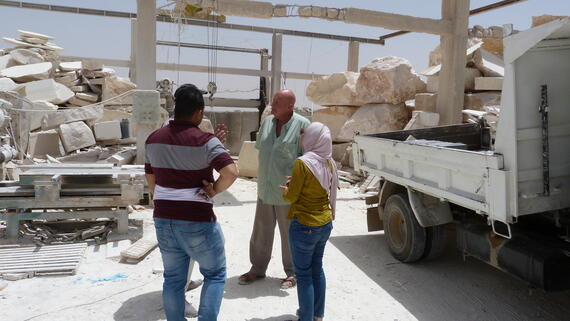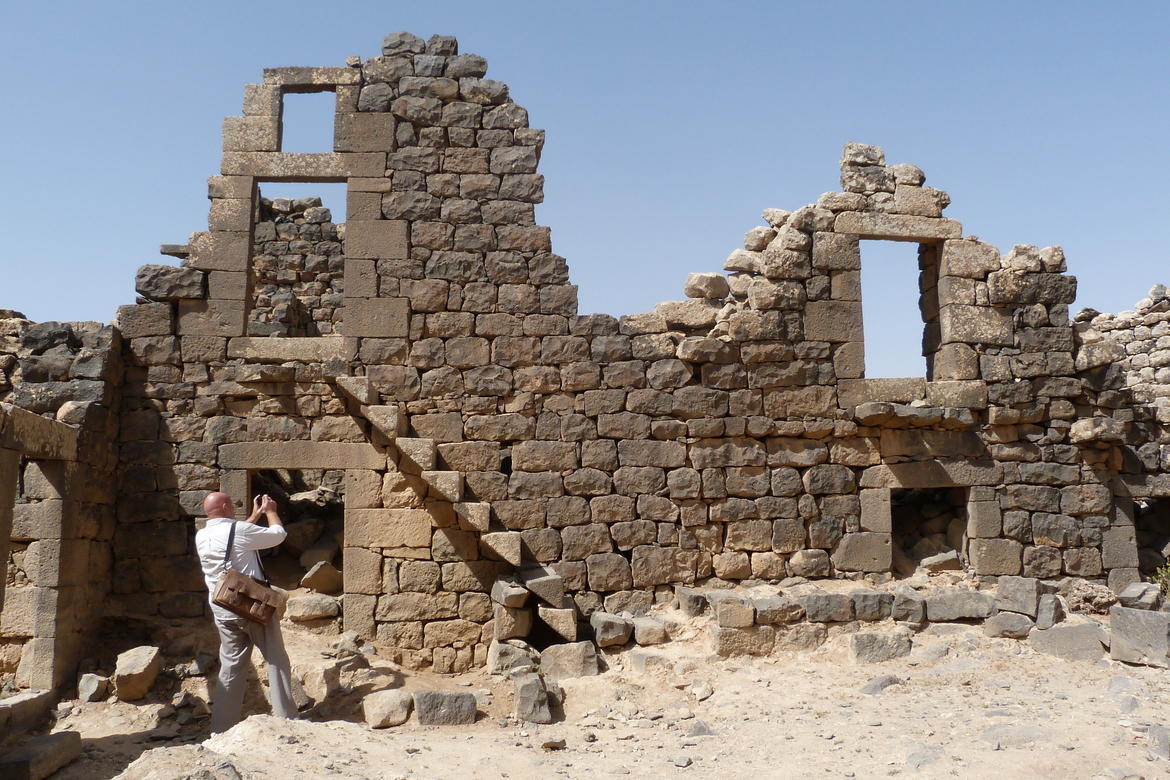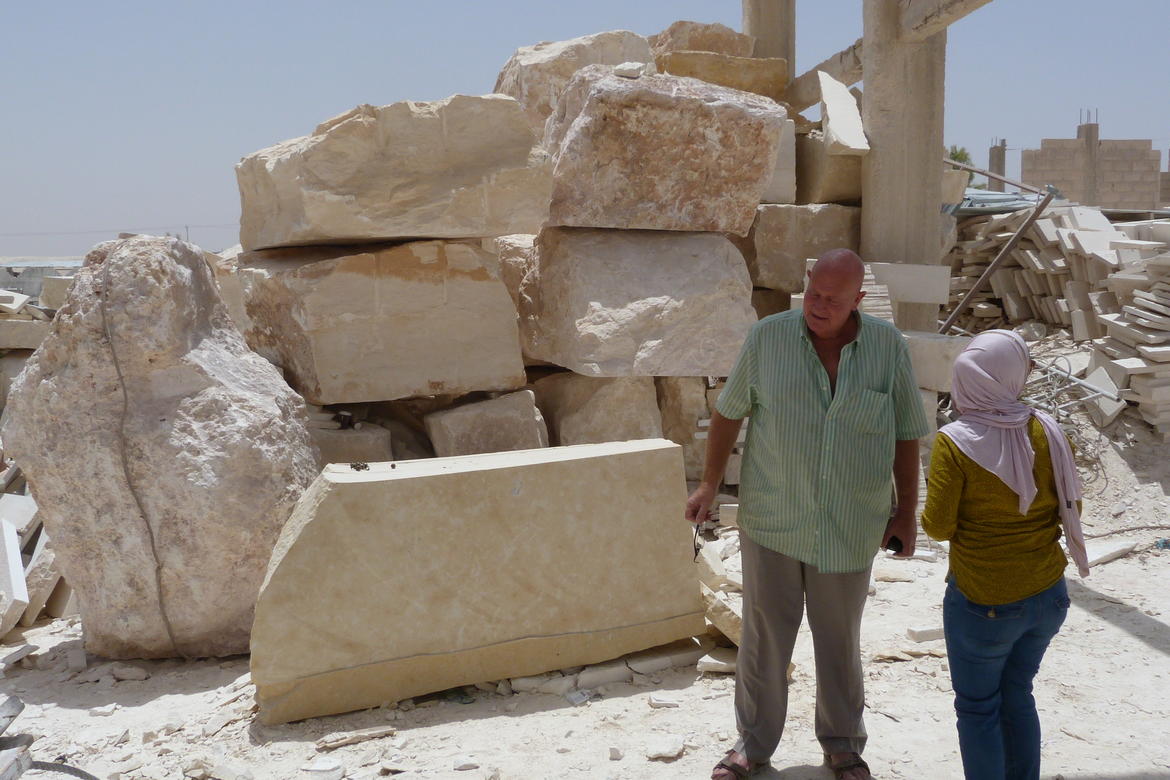A Journey to Mafraq: The Beginnings of Refugee Training in Jordan

In this blog post, WMF Program Director Stephen Battle recounts his journey to Mafraq, Jordan, to lay the groundwork for a new heritage conservation training program for Syrian refugees and Jordanians.
................
There is a point on the road between Amman and Mafraq where the road rises above the plain, and as you pass over the ridge you can see down across the flat land far into the distance. The land is mottled yellow and brown. But the eye is drawn to a white expanse that spreads across the plain like a lake. At first it might be a trick of the sun bleaching the dun colours of the plain. But as you look the surface of the lake fragments into a thousand shapes and blocks, and smoke drifts above it into the sky, and it hums with teeming life. We had passed the gates of Zaatari refugee camp earlier in the day. The entrance was guarded by an armoured vehicle but otherwise it looked like the outside of an industrial park with workers streaming in and out for their shifts. Huda, our guide from Petra National Trust, said it was Zaatari, and I was surprised. After all, Zaatari is one of the largest refugee camps in the world. Five years ago it was farmland. Now it is home to 80,000 people seeking refuge from the civil war across the border in Syria. It was not until we passed over the ridge later in the day on our way back to Amman and I looked down across the plain that the enormity of the camp became apparent. Seen from this high point it is vast.
We had spent the day in Mafraq searching for a building to house the stonemasonry training centre. I was accompanied on the trip by Tony Steel and Huda from PNT. Tony is a master stonemason. We spent ten years working together in Syria before the war, and it was poignant to see signs at the side of the highway announcing the border just eight kilometres away. In Syria, we worked mostly in Aleppo, but also at two castles in the mountains, Salah ad Din and Masyaf, and Tony was working at a palace in Damascus before fighting on the outskirts of the city forced him to leave. During those projects, the biggest problem we faced was finding skilled stonemasons and conservators to work with. There are plenty of talented professionals in the region. But knowledge of the craft of stonemasonry has slipped away and now it’s hard to find skilled craftspeople. If that was the case before the war then the situation now is almost certainly worse. The war has led to the destruction of many historic monuments, and many more historic buildings are damaged. One day, hopefully soon, the war will end, and then rebuilding can commence. But there is a risk that reconstruction of Syria’s historic cities could become a second cultural disaster. The experience of Beirut is a chilling precedent, where whole areas of damaged buildings were cleared to make way for modern development. This need not happen. It will take political will and sufficient money. But even if there is will and money, if there are no skilled stonemasons or conservators to carry out the task it is doomed from the beginning.
That was the genesis of this project; that a workforce of skilled stonemasons is a precondition for saving Syria’s shattered heritage. The project is funded by the British Council and implemented through the British affiliate of WMF in partnership with Petra National Trust. We’ve just begun, and this was our first trip to Mafraq. The conservation rationale is clear. But it wasn’t until we passed over the ridge on the outskirts of Mafraq and gazed down on Zaatari that the human reasons were brought home to me. In addition to the 80,000 refugees in the camp it is estimated there are an additional 100,000 refugees living in the town and surrounding region. Many are destitute, living off aid. At present, Syrians in Jordan may only work in the agricultural sector but there are moves to open up the construction sector as well. Training in stonemasonry will give a group of young people a skill and the means to earn a living. I hope most will return to Syria when the time comes to take part in conserving their country’s magnificent cultural heritage. But before then, our project provides a potential source of income, and hope for rebuilding shattered lives.


